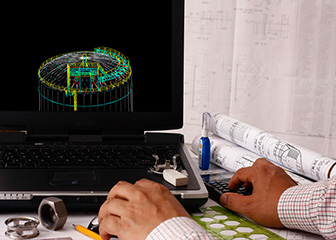Summary

| Quick Facts: Drafters | |
|---|---|
|
$47,880 per year
$23.02 per hour |
|
| Associate’s degree | |
| None | |
| None | |
| 205,100 | |
| 6% (Slower than average) | |
| 11,400 | |
What Drafters Do
Drafters use software to convert the designs of engineers and architects into technical drawings and plans. Workers in production and construction use these plans to build everything from microchips to skyscrapers.
Work Environment
Like other workers who primarily use computers to do their work, drafters usually work indoors and full time, although overtime is not uncommon.
How to Become a Drafter
Developments in new technology are causing entry-level requirements to rise. An associate’s degree is the typical level of education needed to enter the occupation. In addition, drafters need skills from academic programs so that they may move into the work of designing directly for professionals such as engineers or architects.
Pay
The median annual wage of drafters was $47,880 in May 2010.
Job Outlook
Employment of drafters is expected to grow 6 percent from 2010 to 2020, slower than the average for all occupations. Developments in software programs used by drafters and other professionals they work with are changing the nature of drafters’ work and how this work will have to be done.
Similar Occupations
Compare the job duties, education, job growth, and pay of drafters with similar occupations.
O*NET
O*NET provides comprehensive information on key characteristics of workers and occupations.
Contacts for More Information
Learn more about drafters by contacting these additional resources.















